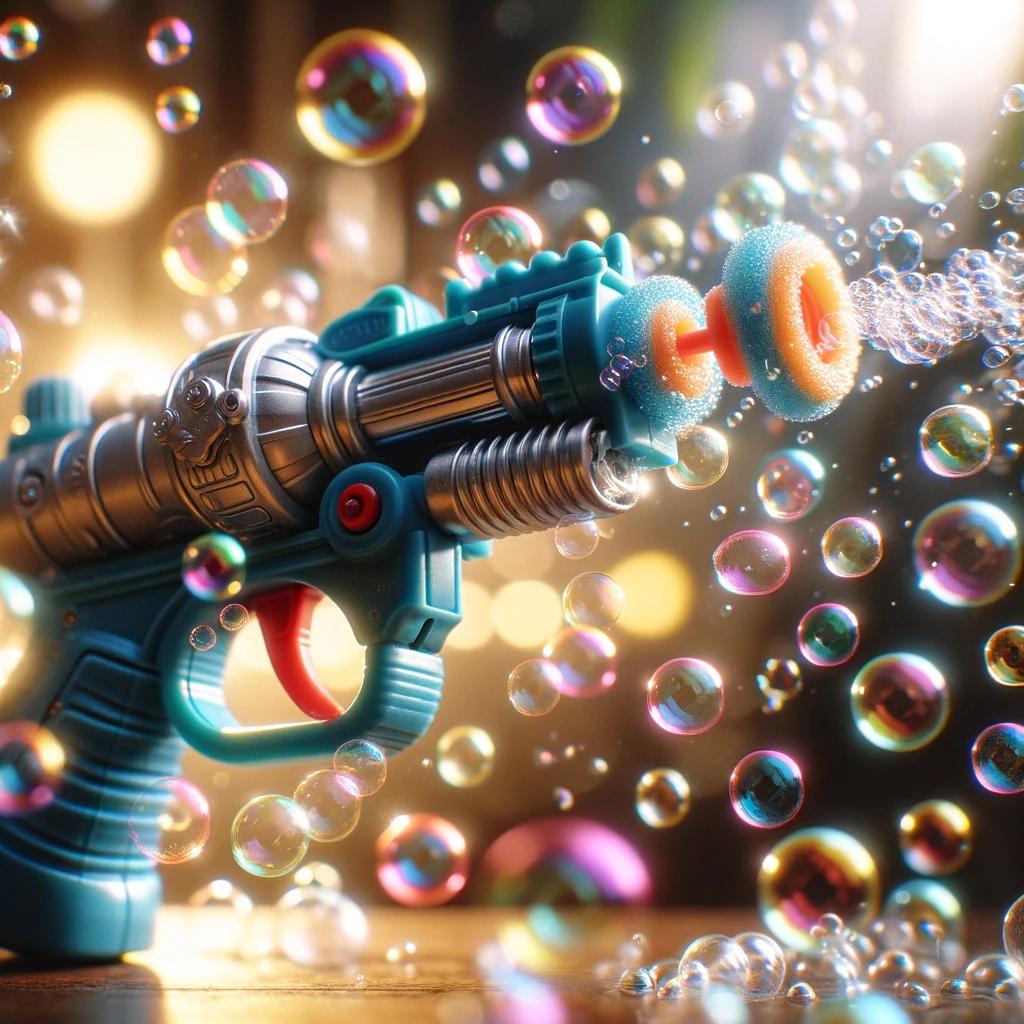The Chemistry Behind Bubble Guns: Understanding the Key Ingredient
Bubble guns, a popular toy that delights children and adults alike with their ability to produce streams of glistening soap bubbles, rely on a specific chemical mixture to create their magic. The secret behind these floating spheres of wonder is not a single chemical but a carefully balanced solution typically composed of water, soap, glycerin, or polyethylene glycol. Let’s delve into the components that make bubble guns a source of endless fascination and fun.

Water: The Base of the Solution
Water acts as the primary solvent in bubble solutions, dissolving soap and glycerin to create a liquid that can form bubbles. Water quality can affect the bubble formation, with distilled water often preferred for creating the most consistent and stable bubbles.
Soap: The Surface Tension Reducer
The soap used in bubble solutions is usually a detergent that reduces water’s surface tension. This reduction in surface tension is crucial for bubble formation, as it allows the water to stretch into a thin film without breaking. The soap molecules align themselves at the water-air interface, with their hydrophobic (water-repelling) tails pointing outward and their hydrophilic (water-attracting) heads pointing inward, stabilizing the bubble’s thin water film.
Glycerin or Polyethylene Glycol: The Stabilizers
Glycerin or polyethylene glycol is added to bubble solutions to increase the viscosity and longevity of the bubbles. These substances slow the evaporation of water from the bubble’s surface, allowing bubbles to last longer and fly farther without popping. Glycerin, a colorless, odorless liquid, is particularly effective at forming stronger and more resilient bubbles, making it a favorite ingredient in commercial and homemade bubble solutions.
The Role of Chemical Ratios
The effectiveness of a bubble solution depends not only on the presence of these components but also on their precise ratios. Too much soap can make the solution too heavy to form bubbles, while not enough soap won’t reduce the surface tension sufficiently. Similarly, the amount of glycerin or polyethylene glycol must be carefully calibrated to ensure bubbles are stable without making the solution too thick.
Safety Considerations
The chemicals used in bubble solutions are generally safe for children and adults, especially when manufactured by reputable companies. However, it’s essential to use bubble guns and solutions as directed and to avoid ingesting the liquid. Homemade bubble solutions should also be made with non-toxic, safe ingredients to ensure the safety of all users.
Conclusion
The magic of bubble guns lies in the delicate balance of water, soap, and glycerin or polyethylene glycol. This combination of ingredients, perfected over years of experimentation and play, allows for creating bubbles that captivate the imagination and bring joy to people of all ages. Whether through commercial products or homemade concoctions, the chemistry behind bubble guns is a testament to human ingenuity and the pursuit of simple pleasures.
